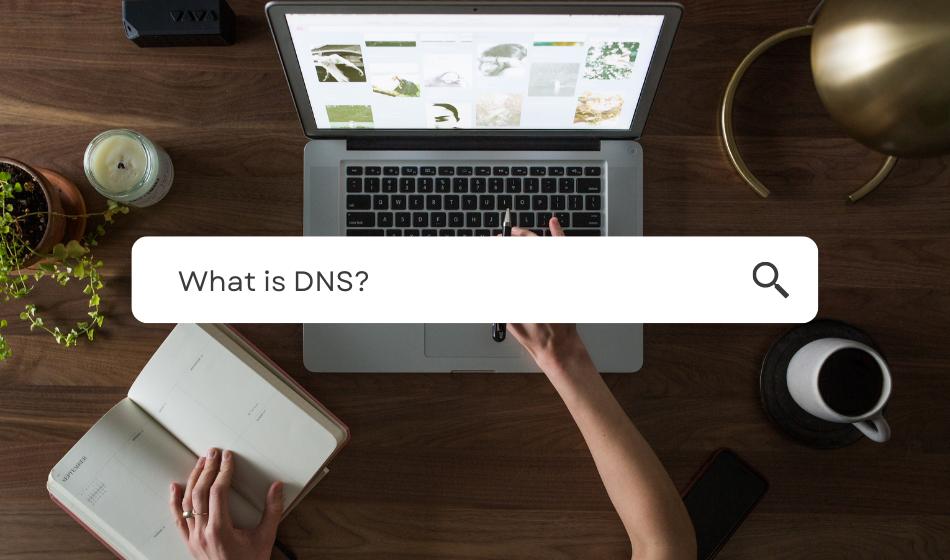A “Domain Name System,” or DNS, is a system that identifies computers accessible via the internet. Every device that connects to the internet has a unique IP address (this address includes a bunch of numbers) that other devices use to find it.
Since IP address are hard to remember, a translation happens between what the user types into their internet browser and accessing the web address — in the most simplistic terms, DNS allows domain names to become IP addresses so computers can find them.
We didn’t always have DNS — in the very beginning we still had to type out the IP addresses. Then in the early 1980s Paul Mockapetris created a system that automatically mapped IP addresses to domain names, and that’s how DNS started.
You can think of DNS like the “phone book” of the internet as it links all of those IP addresses with the domain names we commonly use instead. It’s what holds the internet together!
DNS, or Domain Name System, is a fundamental technology that facilitates human-friendly domain names to be translated into numerical IP addresses that computers use to identify each other on a network. In simpler terms, it’s like the phone book of the internet.
When you type a web address (like www.example.com) into your browser, your computer needs to find the corresponding IP address to connect to the server hosting that website. DNS serves as the translator between the domain name and the IP address, helping your computer locate the requested web page.
Here’s how it generally works:
You type a domain name into your browser’s address bar (e.g., www.example.com).
DNS Query: Your computer sends a request to a DNS resolver (typically provided by your internet service provider) to find the IP address associated with the domain.
DNS Resolution: The DNS resolver checks its local cache to see if it already knows the IP address for the domain. If not, it contacts the root DNS server, which then directs it to the top-level domain (TLD) server (like “.com”).
Iterative Process: The TLD server directs the resolver to the authoritative DNS server for the specific domain (e.g., the server responsible for “example.com”).
IP Address Retrieval: The authoritative DNS server provides the IP address associated with the requested domain back to the resolver.
Accessing the Website: Now armed with the IP address, your computer can connect to the web server hosting the desired website, and you see the web page in your browser.
DNS is crucial for the functionality of the internet, ensuring that users can access websites using human-readable domain names rather than needing to remember numerical IP addresses. It’s a distributed system that involves various servers working together to efficiently translate domain names into IP addresses.
Changing your DNS
Switching up your DNS might not sound like the most fun thing to do, but it can actually make your internet life a bit better. Changing your DNS essentially means redirecting the traffic cop of the internet. Instead of relying on the default DNS provided by your ISP, you’re opting for a different service that might offer benefits like faster speeds, enhanced security, or additional features. It’s a bit like choosing a different route to get to your favorite café – same destination, but potentially a smoother and more enjoyable journey.








